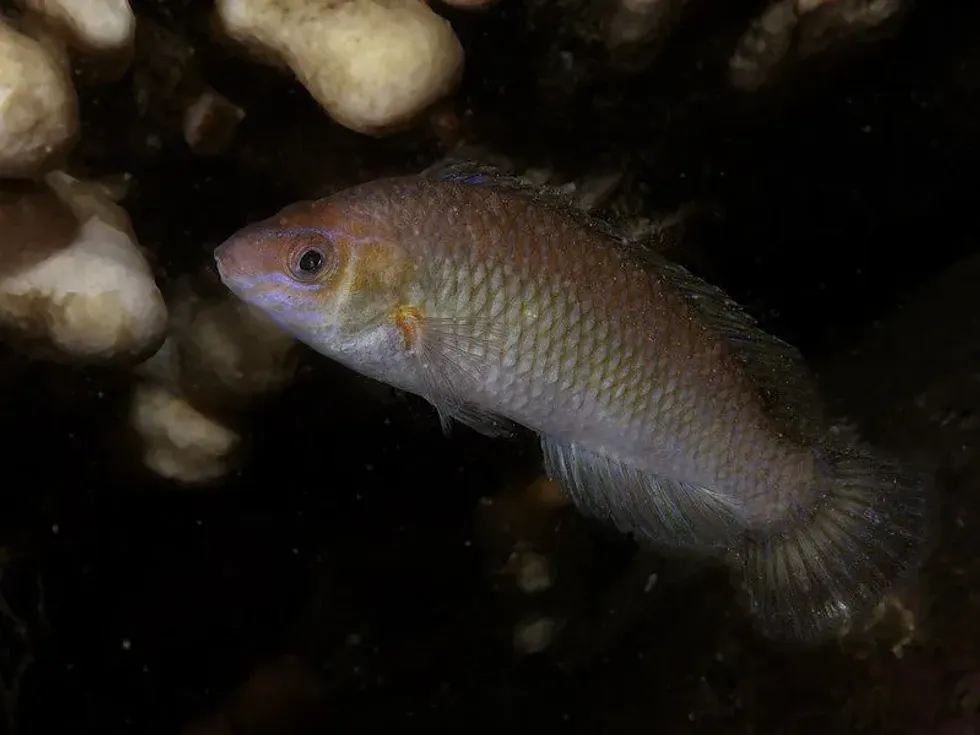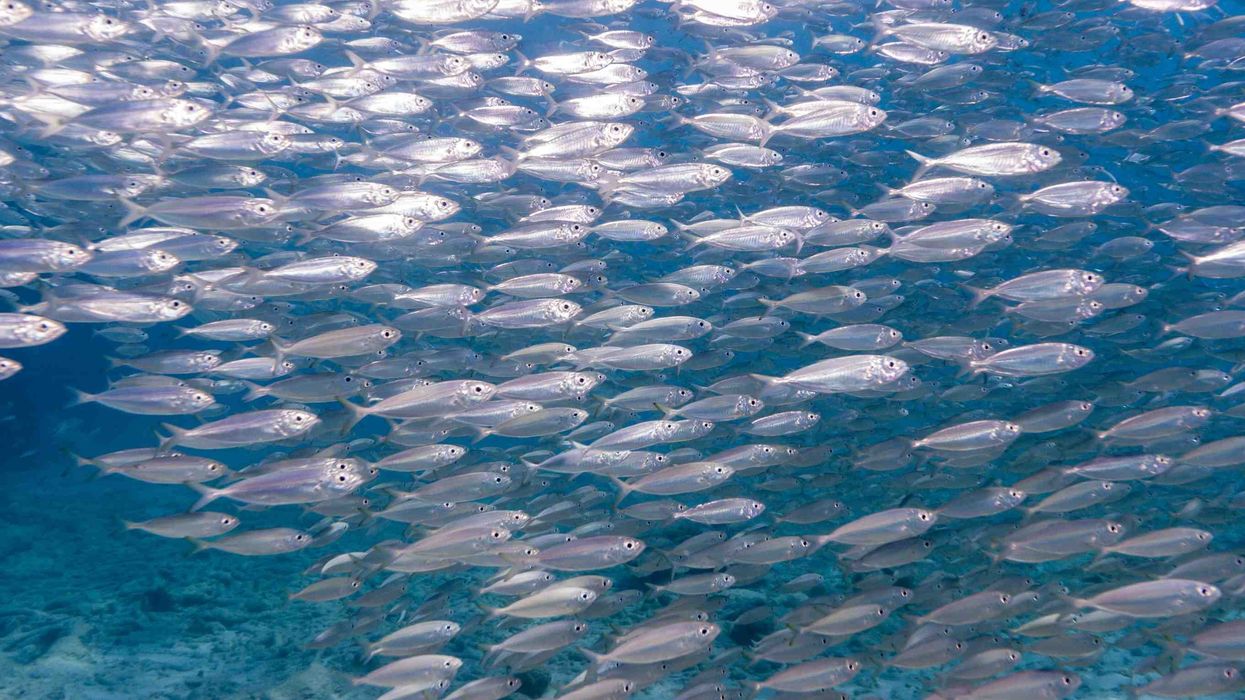Bony Fish (Osteichthyes) are divided into two different genus commonly known as Sarcopterygii and Actinopterygii. Bony Fishes are vertebrates with over 28,000 subclass of Bony Fishes that can be differentiated according to their diet, body size and living habitat.
Bony Fish prefer both salt water and fresh water for their habitat. Many species of Bony Fish have paired pectoral and pelvic fins.
Some species of Bony Fish, like the largest Bony Fish which is the Ocean Sunfish, can be up to 36 ft in length, weighing more than 5701 lb.
These fishes have a history dating back to around 400 million years ago. This species was abundant in oceans around 345-410 million years ago during the Devonian and Silurian periods.
Many subclass also have spines or distinct rays in their fins but these fishes must not be confused with sharks and rays. Bony Fish species is full of several interesting facts which you must know, including how these fish survive in the oceans.
After reading these interesting Bony Fish facts, check out our other articles on brain coral and plaice.
Bony Fish Interesting Facts
What type of animal are Bony Fish?
Bony Fish is a type of fish that includes ray-finned fishes, lobe-finned fishes, and cartilaginous fishes. The largest species of Bony Fishes is the Ocean Sunfish, but it hasn't been spotted in the last decade or so.
These fishes can be divided into two subclass , ray finned fish (Actinopterygii) and lobe finned fish (sarcopterygii). Depending on the species, this fishes can survive in fresh water as well as salt water.
What class of animal do Bony Fish belong to?
Bony Fish belong to the subclass of animals that is fishes. They are widespread in Asia, Europe, America and other countries where freshwater and saltwater oceans and lakes are present. But do not confuse them with sharks and rays.
How many Bony Fish are there in the world?
There are 28,000 species of Bony Fish found everywhere in the world. They vary according to their body weight and length. There is an adequate number of Bony Fish living in the wild and their conservation status is classed as the least concern by the IUCN.
Where do Bony Fish live?
Bony Fish live in freshwater and saltwater oceans and lakes. They may also be found in open streams, springs, and vents. Due to their wide range of species, Bony Fishes can be herbivorous, carnivorous or omnivorous in nature.
What is a Bony Fish's habitat?
A Bony Fish’s natural world is a body of deep sea, including salty, fresh, and tropical oceans. They are also found in temperate and polar seas. Freshwater and ocean environments are the preferred habitats for Bony Fish. They can also be found in vents, thermal springs, caves, and few large species are also seen inhabiting the deep ocean.
Who do Bony Fish live with?
Most Bony Fishes are known for their social behavior, while a few prefer leading a solitary life. These fishes form schools in which they find a partner and mate.
How long do Bony Fish live?
Since there are multiple species of Bony Fish, the life expectancy of species can range from a few months to 100 years. The bigmouth buffalo, a rare species of Bony Fish, is believed to live a lifespan of more than 100 years, while the Sign Eviota, a ray-finned fish, has the shortest lifespan of eight weeks.
How do they reproduce?
Bony Fish reproduction is a little bit different. Ray-finned fishes reproduce sexually and after the male inseminates in the female, the eggs are fertilized externally and the female spawns eggs. Ray-finned fishes reproduce throughout their lifetime.
The sexes in ray-finned fishes are separate. Some species of the lobe-finned fishes use internal fertilization as a mode of reproduction. Some species of Bony Fish are hermaphrodites, which means that they are capable of producing both eggs and sperms.
What is their conservation status?
The conservation status of bonefish is listed as the least concern according to the IUCN. There are 28,000 different species of bonefish that are found in the entire world and are responsible for their healthy population.
The United States Fish and Wildlife Service has listed 114 species of bonefish which have been endangered. Most species of lobe-finned fish are extinct.
Bony Fish Fun Facts
What do Bony Fish look like?
Fun fact about Bony Fish are that they differ in size, weight, appearance, texture, and body weight according to their subclass. Ray-finned fishes (Actinopterygii) have fins that look similar to a web made out of the skin and have thorny, horn-like rays and spines and dorsal fins.
The lobe-finned fishes (Sarcopterygii) have fleshy lobes attached to the body with the help of a single bone.
The pelvic fins and fin rays of these fishes are easy to spot as they have pectoral fins and pelvic lobes absent in ray-finned fishes.
Other common physical features include swim bladder, gill covers over the gill chamber and bony plate like scales. Their teeth are fixed onto the upper jaw and all their teeth are covered with true enamel.

How cute are they?
There are many cute Bony Fish examples we can refer to. Bony Fish look like any normal fish and habitat in any ocean or freshwater environment.
They are not dangerous and do not pose any serious threat. One species of Bony Fish, the piranhas, has a history of attacking human beings, however. Piranhas are also not very cute to look at either.
How do they communicate?
Communication in Bony Fish can vary according to its species. Bony Fishes tend to produce noise by rubbing their teeth together, beating their swim bladder to produce vibrations and displaying body postures by flexing and contracting the muscles of their body.
How big are Bony Fish?
Bony fish can be as small as 0.4 in or as big as 36 ft. Some species of bony fish, like the Oarfish, is the longest bony fish achieving a body length of 36 ft. The weight of an Ocean Sunfish can extend up to 5700 lb, while that of an European Wels Catfish is 661 lb.
How fast can Bony Fish swim?
Bony Fish are considered to be fast swimmers, but the speed at which they swim will vary on the basis of their species. The Ocean Sunfish, the longest Bony Fish, swims at a speed of two miles per hour.
The Bony Fishes tail and their caudal fin propel them underwater and are responsible for their fast speeds. They can maintain a fast speed for a long duration of time.
How much do Bony Fish weigh?
The average weight of a Bony Fish is 90 lb. Some species of Bony Fish have body weights that exceed 5700 lb. The Oarfish and the Ocean Sunfish are the largest Bony Fishes that have humongous weight.
What are their male and female names of the species?
There are no distinctive names for the male and female species of the Bony Fish. They are commonly differentiated on the basis of their sex. Some Bony Fish species are hermaphrodites who do have a sex at their birth which can later change.
What would you call a baby Bony Fish?
Bbaby Bony Fish are known as larvae. When the larvae fully absorb its yolk sac, they are termed as fry. The fry before entering adulthood is known as fingerlings.
What do they eat?
Different species of Bony Fish have different kinds of diets and they can be herbivores, carnivores or omnivores. Species like sharks are top predators and are known to swallow their prey when alive. Parrotfishes are herbivorous in nature and feed on algae. The rohu fish is an omnivorous Bony Fish, which lives in rivers.
Are they dangerous?
Bony Fishes are not very dangerous, but few species like sharks and piranhas pose a severe threat to human beings. Examples of Bony Fish like the barracuda, Atlantic manta, and the giant devil ray also have been recorded to attack humans if provoked.
Would they make a good pet?
Some species of Bony Fishes can make good pets as they can survive in any waterbody. They are low-maintenance and their diet depends on their species. Colorful species of Bony Fishes like the goldfish or the clownfish are mostly kept as pets.
Did you know...
The gills in Bony Fish are present on both sides of the head. They save their energy by making use of the swim bladder filled with gas and remaining in the exact depth of water. This characteristic is absent in cartilaginous fish. The teeth of Bony Fish are attached to its upper jaw.
Unique features of Bony Fish
Bony Fisher have several unique features like their skeleton is made out of bone, their nostrils are paired, ray-finned Bony Fishes have paired fins, the lobes in lobe-finned fishes are articulated to the body with a single bone, most of the species have a single pair of gill openings and most have jaws.
Few examples of Bony Fish like the damselfish and seabasses produce both sperms and eggs and are termed as hermaphrodites.
Different types of Bony Fish
There are 28,000 different species of Bony Fishes divided into three groups: ray-finned fishes, lobe-finned fishes and cartilaginous fishes. Bony Fishes differ in weight, body length and eating habits.
Here at Kidadl, we have carefully created lots of interesting family-friendly animal facts for everyone to discover! Learn more about some other fish including john dory, or ladyfish.
You can even occupy yourself at home by drawing one on our fish coloring pages.










